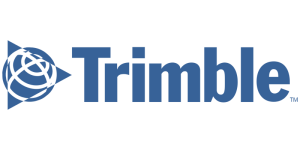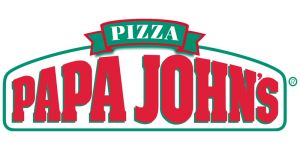Can improving CTR improve SEO ranking in 2024?
As we steer through the ever-evolving landscape of digital marketing, businesses continue to grapple with the golden question: Can improving Click-Through Rate (CTR) bolster Search Engine Optimization (SEO) rankings in 2024? At JEMSU, a leading full-service digital advertising agency, we understand the critical interplay between user engagement metrics and search engine algorithms. As industry experts, we’ve witnessed firsthand the seismic shifts in SEO strategies and the growing emphasis on user experience signals.
In the digital marketing realm, CTR stands as a pivotal performance indicator, measuring the percentage of clicks advertisers receive on their ads relative to the number of impressions. The prevailing thought is that a higher CTR not only signifies more effective engagement with potential customers but could also signal to search engines that content is relevant and valuable, potentially influencing SEO rankings. As search engines like Google continue to refine their algorithms, the importance of aligning user intent with content has never been more pronounced.
JEMSU’s commitment to staying at the forefront of digital marketing trends means delving deep into the correlation between CTR and SEO rankings. Our experience suggests that while CTR is not a direct ranking factor, its impact on user experience and perceived content relevance could indirectly affect a website’s position on search engine results pages (SERPs). In this ever-competitive digital age, understanding and optimizing these nuances could be the difference between languishing in obscurity and soaring to the top of the rankings in 2024.
Table of Contents
1. Relationship Between Click-Through Rate (CTR) and SEO Rankings
2. Impact of User Engagement Signals on SEO
3. Techniques for Improving CTR on Search Engine Results Pages (SERPs)
4. Algorithm Updates and the Evolving Importance of CTR in SEO
5. Measuring and Analyzing CTR Data for SEO Optimization
6. Balancing CTR Optimization with Other SEO Best Practices
7. FAQs
Instant SEO Checker + Score & Report
Enter the URL of any landing page to see how optimized it is for one keyword or phrase...
Relationship Between Click-Through Rate (CTR) and SEO Rankings
Understanding the relationship between Click-Through Rate (CTR) and SEO rankings is crucial for businesses like JEMSU to enhance their online visibility and drive organic traffic to their websites. CTR is a metric that measures the number of clicks advertisers receive on their ads per number of impressions. This key performance indicator reflects how effectively your ad captures users’ interest.
When it comes to SEO, the prevailing theory is that a higher CTR can signal to search engines that a particular piece of content is relevant and valuable to searchers, potentially leading to higher rankings. For example, if JEMSU’s blog post about ‘The Latest SEO Trends’ has a higher CTR than competing pages, it could be inferred that users find JEMSU’s content more appealing, which might prompt search engines to rank the article higher, believing it will satisfy the user’s query better.
In the digital marketing world, an often-quoted stat is that the top result in Google’s organic search results has an average CTR of 31.7%. This statistic highlights the importance of ranking well and optimizing for clicks. If JEMSU optimizes their content to appear at the top of SERPs, not only could this improve visibility, but the high CTR associated with top positions could further reinforce its SEO standing.
One analogy to consider is that of a busy marketplace. If a particular stall consistently attracts a crowd, it’s a sign to others that it has something desirable to offer. Similarly, a high CTR is like a busy stall in the marketplace of search results—it draws the attention of the search engines, which could lead to better positioning.
As an example, JEMSU might implement meta title and description optimizations to entice more clicks. If these changes lead to a significant increase in CTR for their key pages, they may observe a corresponding improvement in their SEO rankings over time. However, it’s important to note that while CTR can influence SEO, it’s only one of many factors that search engines consider. Therefore, JEMSU must maintain a balanced approach to SEO that factors in content quality, keyword relevance, user experience, and other best practices alongside CTR optimization.
Google Ads Success Example
The Challenge: The Challenge: Increase new dental patients with better Google Ads campaigns.
Impact of User Engagement Signals on SEO
User engagement signals are a critical component of SEO, and their impact on search rankings is becoming increasingly important. As a digital advertising agency, JEMSU understands that these signals, which include metrics such as click-through rate (CTR), time on site, and bounce rate, serve as indicators of the relevance and value that users find in a website’s content. In essence, when users frequently click on a site’s link in search results (a high CTR), spend considerable time on the site, and navigate through multiple pages, search engines interpret these behaviors as signals that the site is delivering a positive user experience and relevant information.
To illustrate this point, imagine a bookstore where customers who pick up a book from a display shelf immediately put it back down – this would suggest that the book does not meet their expectations or needs. Similarly, if a website has a low CTR or users leave the site quickly (indicative of a high bounce rate), it suggests to search engines that the content might not be as relevant or engaging, which could negatively affect its SEO ranking.
JEMSU leverages this understanding to help clients optimize their digital platforms. For example, by analyzing user engagement metrics, JEMSU can refine a website’s content strategy, design, and usability to better meet user expectations and improve these engagement signals. This in turn can lead to improved SEO rankings as search engines reward websites that offer high user satisfaction with better visibility in search results.
Moreover, there are stats that reinforce the correlation between user engagement and SEO. For instance, a study by Moz showed that pages with a higher CTR also tended to have higher SEO rankings, suggesting that user engagement does play a role in how search engines assess and rank websites.
In the fast-paced world of digital marketing, it is no longer just about optimizing for keywords or backlinks; it’s also about captivating and engaging an audience. JEMSU excels in creating tailored content that resonates with target audiences, thus enhancing user engagement signals and, by extension, potentially boosting SEO rankings.
By keeping a pulse on the latest trends and algorithm updates, JEMSU ensures that its strategies are not only current but also geared towards the future of SEO. Although direct causation between CTR and SEO ranking can be difficult to establish, the indirect effects through user engagement are undeniable. As search engines continue to evolve, they are likely to place even greater emphasis on user engagement, making it an integral part of any comprehensive SEO strategy.
Techniques for Improving CTR on Search Engine Results Pages (SERPs)
Improving Click-Through Rate (CTR) on Search Engine Results Pages (SERPs) is a multi-faceted process that can have a significant impact on SEO rankings. At JEMSU, we emphasize the importance of optimizing every aspect of your search listings to enhance visibility and entice users to click through to your website.
One of the most effective techniques for improving CTR is to craft compelling and relevant meta titles and descriptions. These elements serve as an advertisement for the content on the page; they should be both informative and engaging. JEMSU’s approach involves using targeted keywords while also appealing to the searcher’s intent. It’s a bit like fishing – the meta title and description are the lures that catch the attention of the fish (searchers), and if they are enticing enough, you’ll get a bite (click).
Another strategy is to make use of rich snippets and structured data. By adding extra pieces of information like ratings, prices, or availability, your search listing stands out from the competition. It’s akin to a product on a shelf that has a bright, informative label compared to a generic, unbranded counterpart. This additional information can significantly improve your CTR as users are often drawn to listings that provide the most relevant information upfront.
JEMSU also recognizes the importance of optimizing for mobile SERPs. With the majority of searches now conducted on mobile devices, ensuring your site is mobile-friendly and your listings are optimized for the smaller screen can dramatically increase your CTR. Think of it like a billboard: if it’s large and readable from a distance, it’s effective. But if it’s too small and cluttered, people will simply pass it by.
Incorporating these techniques, JEMSU helps clients not only improve their CTR but also potentially boost their SEO rankings. For instance, a study by Moz indicated that after analyzing over 5 million Google search results, pages with a higher CTR tended to rank higher. This illustrates the potential power of an optimized CTR in the SEO landscape.
Ultimately, boosting your CTR requires a blend of art and science, combining creative copywriting with data-driven decision-making. By employing these methods, JEMSU aims to enhance the visibility and attractiveness of your search listings, making them irresistible to searchers and driving more qualified traffic to your website.
SEO Success Story
The Challenge: The Challenge: Design an SEO friendly website for a new pediatric dentist office. Increase new patient acquisitions via organic traffic and paid search traffic. Build customer & brand validation acquiring & marketing 5 star reviews.
Algorithm Updates and the Evolving Importance of CTR in SEO
As a digital advertising agency, JEMSU closely monitors the impact of algorithm updates on search engine optimization (SEO), and particularly how these updates affect the importance of click-through rate (CTR) in SEO. Over the years, search engines like Google have released numerous algorithm updates that have shifted the SEO landscape, and understanding these changes is crucial for maintaining and improving search rankings.
One of the key reasons algorithm updates affect the importance of CTR in SEO is because search engines are constantly striving to improve user experience. They want to ensure that the most relevant and valuable content is easily accessible. When a user performs a search and clicks on a result, it’s an indicator to search engines that the content fulfills the user’s intent. As JEMSU knows, a higher CTR can suggest to search engines that a webpage is a good match for a query, which might, in turn, positively influence its rankings.
However, it’s important to note that while CTR is an indirect signal of content relevance, it’s not the only factor considered. Search engines use a multitude of signals to rank pages, and the weight of each signal can change with new algorithm updates. For instance, if a major algorithm update were to increase the importance of page experience signals, such as loading speed or mobile-friendliness, CTR might have a comparatively smaller direct impact on SEO rankings.
JEMSU stays ahead of the curve by analyzing trends and patterns from past updates. For example, after the release of Google’s “RankBrain” update, which incorporated machine learning to better understand search queries, it became clear that user engagement signals, possibly including CTR, were likely playing a more significant role in search rankings. While Google has not explicitly confirmed the exact role of CTR in its algorithms, the industry has seen correlations through various studies where pages with higher CTRs seemed to enjoy better rankings.
In the context of SEO in 2024, it’s essential to consider that search engines are becoming more sophisticated. They’re not just evaluating the number of clicks a search result receives, but also the quality and context of those clicks. JEMSU recognizes that a high CTR is beneficial, but if users quickly bounce back to the search results after clicking, it may indicate to search engines that the page wasn’t as relevant as it seemed, potentially negating the benefits of a high CTR.
In practice, digital marketing agencies like JEMSU might look at examples where a strategic change in meta titles and descriptions led to an improved CTR and subsequently better rankings. However, it’s equally important to ensure that the content of the page lives up to the promise of the meta title and description, to maintain those rankings post-click. Thus, while CTR is evolving in its importance due to algorithm updates, it should not be optimized in isolation but rather as part of a broader, quality-focused SEO strategy.
Jemsu has been a great asset for us. The results have grown at strong positive linear rate. They have been extremely accessible, flexible, and very open about everything. Natalya is a star example of how to work with your accounts to drive them forward and adjusts to their quirks. Jaime is able to clearly communicate all of the work that is being done behind the scenes and make sure that all of my team is understanding.
I couldn’t be more pleased with my JEMSU Marketing Team!
Julia, Tamara, Joelle and Dally have exceeded my expectations in professionalism, creativity, organization, and turn around time with my Social Media Management project.
I have thoroughly enjoyed sharing my journey with this team of empowered women!
Thank you JEMSU! Your team designed and launched my new website, and developed strategies to drive traffic to my site, which has increased my sales. I highly recommend your Website & SEO Agency!
Jemsu has always been professional and wonderful to work with on both the SEO and website design side. They are responsive and take the time to explain to us the complicated world of SEO.
Jemsu is an excellent company to work with. Our new website blows away our competition! Unique, smooth, and flawless. Definite wow factor!
The folks at JEMSU were excellent in designing and launching our new website. The process was well laid out and executed. I could not be happier with the end product and would highly recommend them to anyone.
Jemsu is a great company to work with. Two prong approach with a new site and SEO. They totally redesigned my website to be more market specific, responsive, and mobile friendly. SEO strategy is broad based and starting to kick in. My marketing will also be adding Facebook and Google ads in the coming weeks. Thanks for your all you hard work.
JEMSU has wworked with our team to create a successful campaign including incorporating an overall rebranding of our multiple solutions. The JEMSU team is embracing of our vision and responds timely with life of our ideas.
JEMSU is great company to work with. They listen & really work hard to produce results. Johnathan & Sasha were such a big help. If you have a question or concern they are always there for you.
I would definitely recommend them to anyone looking to grow their company through adwords campaigns.
Jemsu have exceeded our expectations across all of our digital marketing requirements, and I would recommend their services to anyone who needs expertise in the digital marketing space.
JEMSU was able to quickly migrate my site to a new host and fix all my indexation issue. I look forward to growing my services with JEMSU as I gain traffic. It’s a real pleasure working with Julian and Juan, they’re both very professional, courteous and helpful.
JEMSU is incredible. The entire team Is professional, they don’t miss a deadlines and produce stellar work. I highly recommend Chris, Rianne, and their entire team.
We’ve been working with JEMSU for about five months and couldn’t be happier with the outcome. Our traffic is up and our leads are increasing in quality and quantity by the month. My only regret is not finding them sooner! They’re worth every penny!
Measuring and Analyzing CTR Data for SEO Optimization
In the ever-evolving world of SEO, businesses like JEMSU are constantly looking for ways to gain a competitive edge. One key metric that can provide significant insights into user behavior and search engine performance is the Click-Through Rate (CTR). Measuring and analyzing CTR data is a strategic approach to SEO optimization that can reveal how effective your content and search listings are at capturing the attention of potential visitors.
When JEMSU dives into the analytics of a website, they focus on how often users click on a link relative to how often that link is shown, known as impressions. This ratio is the CTR, and it’s a critical indicator of how relevant and appealing your search snippets are to the target audience. For example, a high CTR means that a considerable percentage of people who see the snippet feel compelled to learn more and click through to the website, which suggests that the title, description, and URL are well-aligned with the search intent.
However, it’s not just about having a high CTR; it’s about understanding what these numbers say about user behavior and search relevance. JEMSU employs various tools and methods to measure CTR, such as Google Search Console or other analytics platforms. These tools provide detailed reports that help dissect the performance of different keywords and pages. By analyzing this data, JEMSU can identify trends and patterns, such as which types of headlines generate more clicks or what meta descriptions resonate best with the audience.
One analogy to consider when thinking about CTR is that of a storefront window. If the display inside the window is intriguing and inviting, passersby are more likely to enter the store. Similarly, a search result that accurately and attractively previews the content of a webpage will entice more clicks. JEMSU understands this and crafts meta titles and descriptions with the same care as a window display designer, aiming to attract the maximum number of ‘digital passersby.’
Furthermore, it’s important to note that while CTR is an important metric, it should not be optimized in isolation. JEMSU balances CTR optimization with other SEO best practices to ensure that the traffic driven to the site is not just high in volume but also high in quality. By analyzing CTR in conjunction with other metrics like bounce rate, conversion rate, and time on site, JEMSU can get a holistic view of a website’s performance and user engagement.
Incorporating CTR analysis into SEO strategy can lead to tangible improvements in a website’s organic search performance. For instance, a study by Advanced Web Ranking showed that the average CTR for the first position in Google search results is about 27.5%. This highlights the importance of ranking well, but also of having compelling listings that will maintain or improve upon those average CTRs once top positions are achieved. JEMSU leverages this type of data to inform strategic adjustments, aiming to not only achieve high rankings but also to maximize the potential traffic from those positions.
SEO Success Story
The Challenge: Increase dent repair and body damage bookings via better organic visibility and traffic.
Balancing CTR Optimization with Other SEO Best Practices
Optimizing Click-Through Rate (CTR) is a significant aspect of improving a website’s SEO performance, but it’s not the only factor that search engines consider when ranking pages. JEMSU understands that while CTR can reflect the attractiveness of a title or meta description to users, it’s important to balance CTR optimization with other SEO best practices to achieve the best results in search engine rankings.
One analogy to consider is viewing SEO as a well-balanced diet. Just as a balanced diet includes a variety of nutrients to maintain health, an effective SEO strategy incorporates a mix of elements. CTR is like the vitamins of your SEO diet—it’s essential, but it’s not the only thing you need. A focus solely on CTR optimization without considering other factors such as high-quality content, page speed, mobile-friendliness, and proper keyword targeting would be akin to only taking vitamins and neglecting other food groups.
For example, JEMSU might help a client improve CTR by crafting compelling meta descriptions, which can entice users to click on a particular search result. However, if the page content doesn’t satisfy the user’s search intent or the page loads slowly, the bounce rate might increase, ultimately sending negative signals to search engines. It’s crucial, then, to ensure that once the user lands on the page, their experience is positive, and they find the information they were seeking.
Statistics show that a balance between various SEO tactics is necessary for success. According to a study, websites that load within 2 seconds have an average bounce rate of 9%, while sites that take 5 seconds to load experience bounce rates as high as 38%. These figures underscore the importance of page speed optimization in conjunction with efforts to improve CTR.
Furthermore, experts in the industry often quote that “content is king,” which highlights the importance of high-quality, relevant content in SEO. JEMSU leverages this principle by ensuring that the content on a client’s website is not only designed to attract clicks but also to engage and provide value to the visitor, which can lead to higher dwell times and more favorable SEO outcomes.
In conclusion, while optimizing for a higher CTR is a valid and important goal, JEMSU emphasizes the need to maintain a holistic approach to SEO. By balancing CTR optimization with comprehensive SEO best practices, businesses can create a robust online presence that satisfies both users and search engines, paving the way for sustainable growth and improved search rankings in 2024 and beyond.
FAQS – Can improving CTR improve SEO ranking in 2024?
1. **What is CTR and how does it impact SEO ranking?**
– Click-through rate (CTR) is the percentage of users who click on a link to your website after seeing your listing in the search results. It’s calculated by dividing the number of clicks by the number of impressions. A higher CTR indicates that your listing is relevant and appealing to searchers, which can positively influence your SEO ranking as search engines interpret this as your site being more relevant to the search query.
2. **Can improving CTR directly improve my SEO ranking?**
– While CTR is not a direct ranking factor, it can indirectly affect your SEO rankings. Search engines like Google may use CTR as a signal of relevance. If your site has a higher CTR, it might be considered more relevant to the search query, which could lead to better rankings.
3. **What are some strategies to improve CTR for better SEO?**
– To improve CTR, consider creating more compelling and relevant title tags and meta descriptions, using structured data to enhance your listing with rich snippets, targeting relevant keywords, and maintaining a high-quality, informative landing page that matches the search intent.
4. **Does improving CTR have a long-term effect on SEO?**
– Improving CTR can have a positive long-term effect on SEO if it’s part of a comprehensive strategy that includes creating high-quality content and providing a good user experience. Consistently high CTRs can signal to search engines that your website remains relevant and valuable to users over time.
5. **Are there any tools to help measure and improve CTR?**
– Yes, there are several tools available. Google Search Console is a free tool that provides insights into your website’s performance in Google Search, including CTR data. Other third-party tools like SEMrush, Ahrefs, and Moz can also help analyze and improve CTR.
6. **How important is CTR compared to other SEO factors?**
– CTR is one of many factors that can influence SEO rankings. While it’s important, it should not be the sole focus of your SEO strategy. Other factors like content quality, backlinks, page speed, mobile-friendliness, and user experience are also crucial for SEO success.
7. **Can a high CTR overcome poor content quality in SEO rankings?**
– No, a high CTR cannot overcome poor content quality. High-quality content is a fundamental component of SEO and is necessary for maintaining and improving rankings. A high CTR may initially attract visitors, but if the content is poor, it can lead to high bounce rates and low user engagement, which can negatively affect SEO rankings.
8. **Is CTR more important for certain types of search results, like local or mobile searches?**
– CTR can be particularly important for local and mobile searches as these users are often seeking immediate information or solutions. A mobile-friendly website with a clear and compelling listing is more likely to attract clicks from these users.
9. **How can I measure the impact of CTR changes on my SEO rankings?**
– To measure the impact of CTR changes on SEO rankings, you can monitor your website’s rankings and CTR over time using Google Search Console. By analyzing trends and correlating changes in CTR with changes in rankings, you can get an idea of the impact.
10. **If I improve my CTR, how soon will I see changes in SEO rankings?**
– SEO is a long-term strategy, and changes in rankings due to adjustments in CTR may take weeks or even months to become apparent. It’s important to continually monitor and adjust your strategy based on performance data and search engine updates.
SEO Success Story
The Challenge: Increase new dental patients with better organic visibility and traffic.















